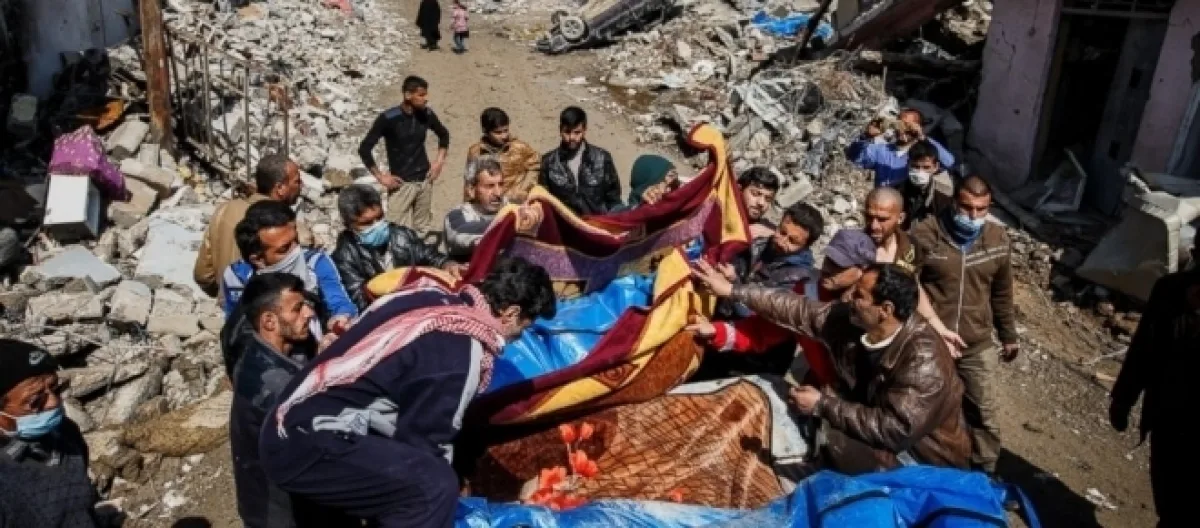Late last year, a military coalition led by the Iraqi army began an operation to liberate the northern Iraqi city of Mosul from the control of the so-called Islamic State (ISIS), who had held the city since June 2014.
The fight has seen several successes. In January, the eastern half of the city was liberated from the terrorist group. Schoolchildren are returning to classrooms in Mosul, their teachers overjoyed to shed the oppressive and indoctrinating curriculum of radical Islam forced upon them by ISIS.
The U.S. military is currently engaged, however, in an investigation into certain air strikes it has carried out as a part of the coalition to free Mosul. The United States is investigating whether or not air strikes it carried out on March 17th were responsible for the deaths of Iraqi civilians. Members of the Iraqi military are more certain; American air strikes did kill civilians, and the Iraqi military was the one who requested the strikes.
U.S. acknowledges airstrikes
Between March 17th and March 23rd, explosions rocked the neighborhood of Mosul al-Jadida, which is Arabic for New Mosul. On March 25th, nearly a week after the incident, the United States acknowledged that it had indeed carried out airstrikes in Mosul that day.
The United States military said in its statement that the airstrikes were called in by the Iraqi army and that the location the airstrikes had hit corresponded to the area where claims of high civilian casualties have been reported. Essentially, the United States has acknowledged that it launched the airstrikes in Mosul al-Jadida.
Iraqi Major General Maan al-Saadi, who commands Iraqi special forces, told the New York Times that he called in the airstrikes to ISIS snipers on the roofs of three buildings in the densely-populated neighborhood in west Mosul. The special forces were unaware that the basements of the buildings were full of innocent Iraqis. This airstrike is one of the deadliest actions by United States' air missions on Iraqi civilians since the invasion of 2003.
American investigation beset by urgency
The United States military, in an investigation of the incident, has several questions concerning the United States' role in the death of up to 200 Iraqi civilians in western Mosul. Did the U.S. indeed strike the buildings in which civilians were in during the airstrikes? If that is the case, why did this happen? Was the United States unaware of a civilian presence, or were the wrong buildings hit? Were civilians killed by the bombs themselves or secondary explosions? Questions of the actual death toll remain as well.
Some skepticism exists in Washington, as the United States has no intelligence-gathering capabilities of its own on the ground in Mosul at the moment, and has to rely on local reports that American officials are unable to verify.
However, there is a strong desire among American military officials to complete the investigation and ascertain any American role due to the sheer scope of the civilian casualties.
The airstrikes in Mosul are not the only incidents of mass civilian casualties in the fight against ISIS that are being investigated. Residents outside of Raqqa, the so-called Islamic State's capital in Syria, along with activists and state television claim that an airstrike by the American-led coalition on March 21st led to 30 civilian deaths. The attack hit a school in the rural Syrian town of Mansoura, where civilians had taken shelter for the night, sources claimed.
There is also controversy over and investigation into another airstrike the previous week in the Syrian town of al-Jinah.
The United States claims it struck a meeting of al-Qaeda affiliated militants and killed a number of extremists. Local residents say that the bombs hit a mosque where people had gathered for prayer.
The Trump Effect on the Rules of Engagement
On November 16, 2015, as the presidential campaign was beginning to get underway, Donald Trump explained the attitude he would bring to combating ISIS in a speech before supporters in Knoxville, Tennesse.
In the 15 months following the Obama administration's declaration of the beginning of an operation to degrade and destroy ISIS, the United States military launched 6,353 airstrikes against ISIS, compared with 1,772 from all other countries combined. Yet there was still frustration on the side of some generals, both in the United States and Iraq, that the Obama administration was over cautious and adverse to using military force.
Donald Trump's statements along the campaign trail make it clear that he holds no reservations to using American firepower against the so-called Islamic state. A recent increase American airstrikes that have led to an immense loss of innocent life brings into question to whether American criteria for ordering airstrikes have changed, although military officials insist that the rules of engagement remain unaltered.
War against terrorist organizations is far from conventional--the fight to liberate western Mosul is currently a block-by-block struggle in heavily-populated urban areas. With the reports coming from Mosul and Syria, serious questions about the consequences of American actions are arising.

